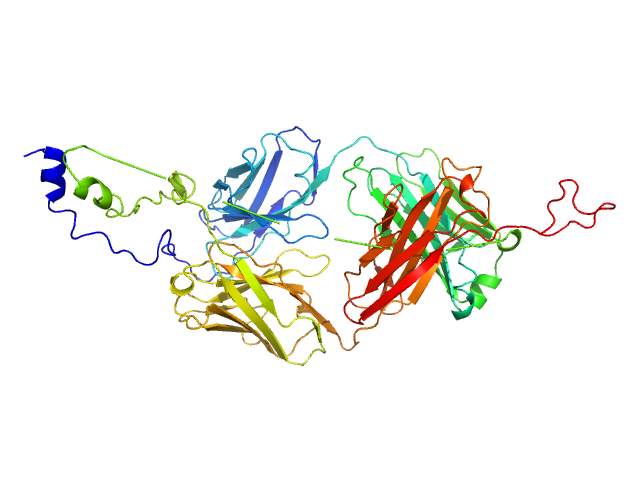| MWexperimental | 59 | kDa |
| MWexpected | 54 | kDa |
| VPorod | 69 | nm3 |
|
log I(s)
6.09×10-2
6.09×10-3
6.09×10-4
6.09×10-5
|
 s, nm-1
s, nm-1
|
|
|
|

|
|
Synchrotron SAXS
data from solutions of
Pro-Nivolumab, Lu02
in
20 mM Tris, 100 mM NaCl, pH 8
were collected
on the
TPS13A beam line
at the NSRRC storage ring
(Hsinchu, Taiwan)
using a Eiger X 1M & 9M detector
at a sample-detector distance of 2.5 m and
at a wavelength of λ = 0.16 nm
(I(s) vs s, where s = 4πsinθ/λ, and 2θ is the scattering angle).
In-line size-exclusion chromatography (SEC) SAS was employed. The SEC parameters were as follows: A 100.00 μl sample
at 10.6 mg/ml was injected at a 0.35 ml/min flow rate
onto a Agilent Bio SEC-3, 300 Å column
at 10°C.
Five successive
2 second frames were collected.
The data were normalized to the intensity of the transmitted beam and radially averaged; the scattering of the solvent-blank was subtracted.
|
|
||||||||||||||||||